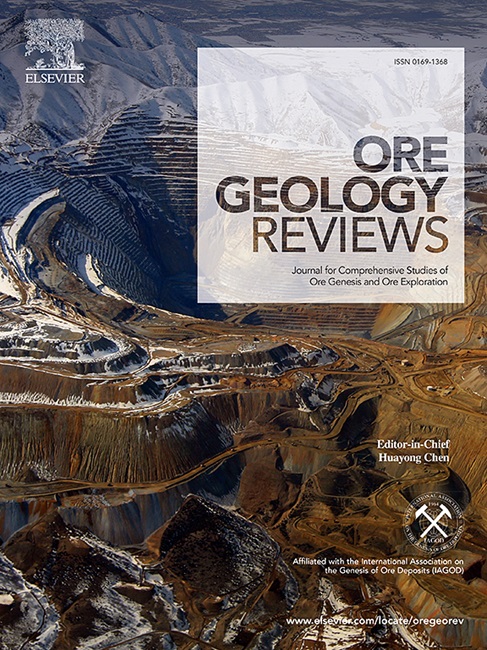Post-mineralization processes and preservation of porphyry deposits controlled by regional tectonic events: A comparative low-temperature thermochronology study of the Hadamiao and Bilihe porphyry Au deposits, north China
IF 3.2
2区 地球科学
Q1 GEOLOGY
引用次数: 0
Abstract
Post-mineralization processes are closely linked to the preservation conditions of porphyry deposits and play an important role in resource prospecting. In this study, we investigate the genetically coeval (late Permian) and spatially adjacent Hadamiao medium-scale and Bilihe large-scale porphyry Au deposits in the Xing’ an-Mongolian Orogenic Belt using low-temperature thermochronology. Zircon (U-Th)/He (ZHe) and apatite fission track (AFT) dating were employed to constrain the denudation history of the mineralized intrusions. The Hadamiao deposit yielded ZHe ages of 237.3–207.8 Ma and AFT ages of 216.0–202.0 Ma. In contrast, the Hadamiao deposit exhibited ZHe ages of 154.9–134.6 Ma and AFT ages of 143.5–125.7 Ma. The narrow time intervals between ZHe and AFT results for both deposits suggest relatively rapid erosion. Inverse modelling indicates that the Bilihe deposit experienced weaker exhumation and greater sedimentary burial compared to Hadamiao. Absence of epithermal alteration in the Hadamiao deposit represents the erosion of the high-grade Au mineralization. Two distinct uplift/erosion events were identified from the thermochronological data and inverse modelling, likely correlating with regional tectonic episodes: (1) a Middle to Late Triassic event associated with continental collision following the closure of Paleo-Asian Ocean, and (2) a Late Jurassic to Early Cretaceoustriggered by flat slab subduction and subsequent rollback of Paleo-Pacific Ocean slab. Finally, we propose that the northern part of Bainaimiao Arc has high potential for deep prospecting based on the observed erosion and stratigraphic distribution.

求助全文
约1分钟内获得全文
求助全文
来源期刊

Ore Geology Reviews
地学-地质学
CiteScore
6.50
自引率
27.30%
发文量
546
审稿时长
22.9 weeks
期刊介绍:
Ore Geology Reviews aims to familiarize all earth scientists with recent advances in a number of interconnected disciplines related to the study of, and search for, ore deposits. The reviews range from brief to longer contributions, but the journal preferentially publishes manuscripts that fill the niche between the commonly shorter journal articles and the comprehensive book coverages, and thus has a special appeal to many authors and readers.
 求助内容:
求助内容: 应助结果提醒方式:
应助结果提醒方式:


